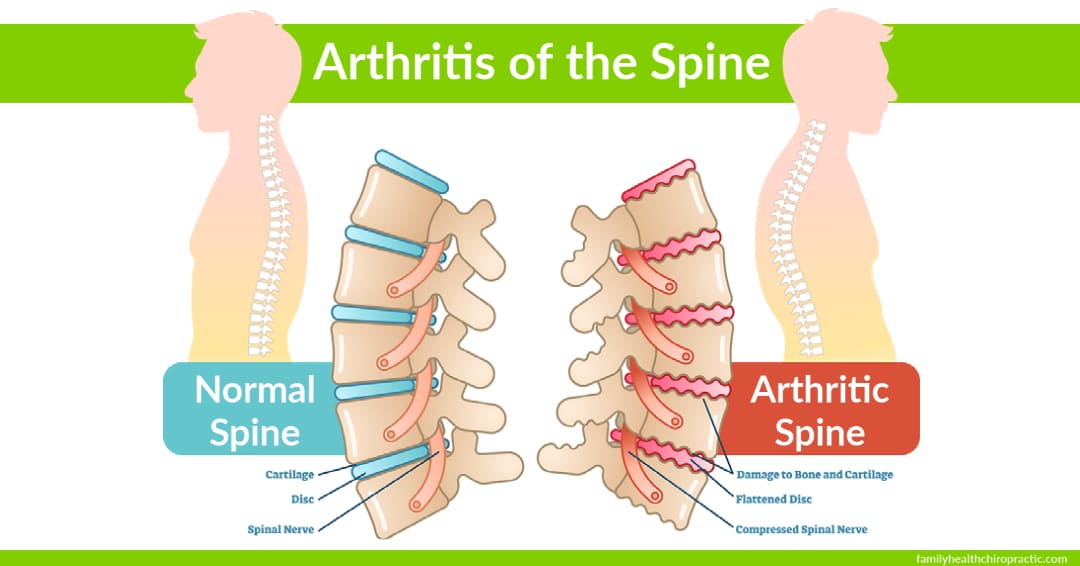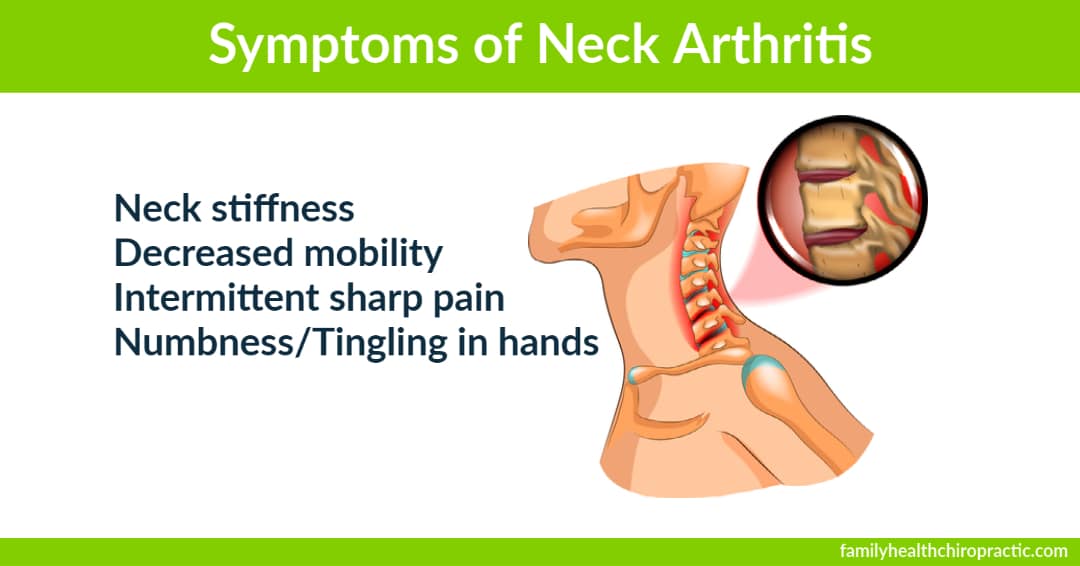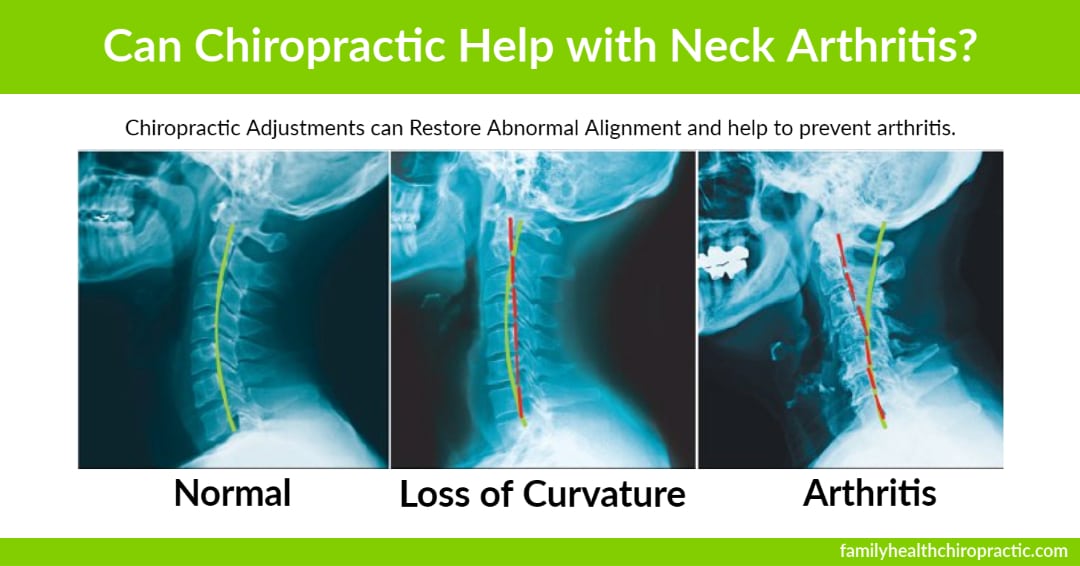Understanding Arthritis of the Neck
Arthritis of the neck, also known as Cervical spondylosis is a form of osteoarthritis or abnormal wear and tear of the joints that make up your neck.
In other words, neck arthritis is a condition involving changes to the bones, discs, and joints of the neck.
These changes are caused by the abnormal wear-and-tear experienced throughout our life.
Certainly, the more time you spend on this planet (the older you are), the more wear and tear you accumulate. So while age is a common risk factor associated with neck arthritis, it's not necessarily normal.
The truth is – at any age, depending on how an individual is treating their body – the degeneration of discs and other cartilage, spurs or abnormal growths called osteophytes can form on the bones in the neck.
These abnormal growths can cause narrowing of spinal column or in the openings where spinal nerves exit, which then causes a conditions known as cervical spinal stenosis.
Cervical spondylosis (arthritis of the neck) most often causes neck pain and stiffness.
Although cervical spondylosis is rarely progressive, corrective chiropractic adjustments and exercises should be the first step towards resolving symptoms.
Of course, in certain extreme cases, cervical spinal surgery would be indicated.

What are Symptoms of Arthritis in the Neck
Neck arthritis develops very slowly over a period of many years.
This means that in the early stages of arthritis in the neck, symptoms are very mild and infrequent.
While it's great than an individual doesn't have symptoms of neck pain, stiffness or nerve irritation, it also allows that individual to continue doing the activities that are contributing to the problem in the first place.
This is why we do not like to focus on symptoms, but base treatment recommendations on clinical examination, digital xrays and bodily function (movement and mobility).
The symptoms of spondylosis occur in several stages depending on the severity of its progression.
In early stages, symptoms include:
- Neck stiffness that improves with activity
- Decreased mobility of the neck
- Intermittent sharp pain
In the more advanced stages of cervical spondylosis symptoms include:
- Significant decrease in neck range of motion
- Swelling around the joints of the neck
- Pain that is worse in the morning
- Pinched nerves (numbness/tingling in arms hands)
- “Jarred” or “Guarded” sensations when moving neck

What Causes Arthritis of the Neck?
A common misconception about arthritis of the neck is that it is a normal age-related process.
This would mean that most people would exhibit the same level of cervical spondylosis at roughly the same age.
While neck arthritis does progress with time, it's not necessarily a normal process of aging.
There are other factors influencing the progression of cervical spondylosis.
Wolff’s Law states that bone will adapt to the load or stress placed upon it. This means that increased loading of bone tissue will promote increased density. This is why many individuals with osteopenia or osteoporosis utilize resistance training to stimulate bone growth.
However, when the stress or load on the bone is abnormally loaded, Wolff’s Law can contribute to the progression of cervical spondylosis.
Consider the following illustration:
A long thin board is placed on top of two blocks, one at either end. This makes a long bridge like span. If an increasing amount of bricks were to be stacked in the center of the board, it would naturally begin to sag. Common sense would suggest that a support will be needed in the center of the board for it to hold more and more bricks. This “buttressing” would make the board more rigid.
In the spine, a similar process plays out with cervical spondylosis.
As abnormal pressure builds up on the segments of the cervical spine, the increased demand requires more support. The wear and tear associated with increased stress around the joints of the neck will stimulate bone cells to produce a hardened tissue to help support the abnormal load.
This makes the spine more rigid, and cervical spondylosis begins to advance.
How does this process start in the average person?
Typically there is a physical trauma that starts the process. This may be a whiplash injury, car accidents, poor posture, or a jarring force to the neck and spine.
This jarring force will cause the alignment of the spine to be compromised.
Without proper alignment, the spine cannot move properly, and abnormal stress begins to build.
Loss of the cervical curve and spine misalignment are common underlying causes of cervical spondylosis.
This occurs when the alignment of the upper spine becomes compromised shifting the weight of the head away from its center of gravity.
As the weight of the head (weighs down on the neck, cervical spondylosis will slowly begin to develop.
How Can Chiropractic Help with Neck Arthritis?
Understanding how arthritis of the neck (cervical spondylosis) progresses is important for knowing what options you have to manage it.
When it comes to answering the question of whether or not chiropractic can help with arthritis, the answer is yes (at least according to the research).
A 2007 British Medical Journal paper titled Cervical Spondylosis and Neck Pain discussed several randomized controlled trials and systemic reviews demonstrating that corrective exercise, manual therapy and spinal manipulation appear to be “equally effective” as other forms of treatment, but without side effects.
In addition, if arthritis of the neck develops because of a loss of abnormal curvature in the spine (which it does), then restoring that abnormal curvature would be a possible treatment and even prevention strategy.
Corrective Chiropractic is the only non-surgical approach to correcting the curvature and biomechanics of the spine.
If you're looking for research that validates a corrective chiropractic approach to improving spine biomechanics, then visit this page for over 261 scientific references (at the time of writing this article) .
Sure, many patients try over the counter pain relievers such as NSAIDs, heat or ice packs, and/or topical pain creams. While these may provide temporary relief, a more long-lasting solution must target the underlying cause of cervical spondylosis – the structural alignment and mechanics of the spine.
Austin chiropractor Dr. Daniel has a unique focus within the chiropractic profession that focuses on detection and correction of cervical curvature and alignment.
Family Health Chiropractic focuses on the alignment, mechanics, and soft tissue integrity of the upper spine.
When the alignment of the cervical spine is restored and the weight of the head is more balanced over the body’s center of gravity, the additional stress placed on the neck is reduced.




